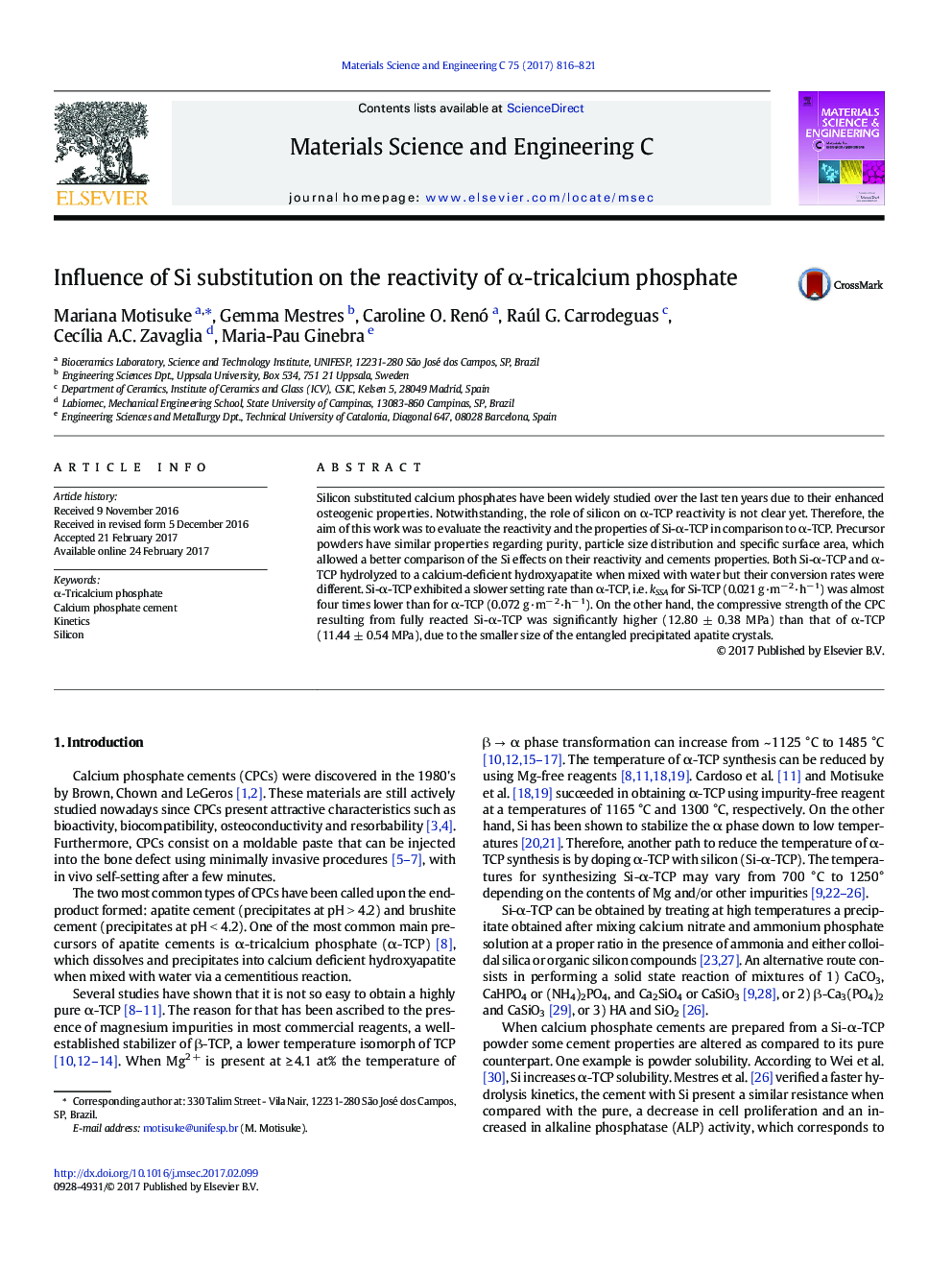| Article ID | Journal | Published Year | Pages | File Type |
|---|---|---|---|---|
| 5434887 | Materials Science and Engineering: C | 2017 | 6 Pages |
â¢The influence of Silicon on α-TCP hydrolysis was investigated in this articleâ¢Silicon reduced α-TCP reactivity by reducing its solubilityâ¢Silicon has increased cement's mechanical resistance due to the smaller size of precipitated apatite crystalsâ¢The reduction on setting reaction velocity may be due to the formation of a silica-rich layer on the surface of Si-α-TCP
Silicon substituted calcium phosphates have been widely studied over the last ten years due to their enhanced osteogenic properties. Notwithstanding, the role of silicon on α-TCP reactivity is not clear yet. Therefore, the aim of this work was to evaluate the reactivity and the properties of Si-α-TCP in comparison to α-TCP. Precursor powders have similar properties regarding purity, particle size distribution and specific surface area, which allowed a better comparison of the Si effects on their reactivity and cements properties. Both Si-α-TCP and α-TCP hydrolyzed to a calcium-deficient hydroxyapatite when mixed with water but their conversion rates were different. Si-α-TCP exhibited a slower setting rate than α-TCP, i.e. kSSA for Si-TCP (0.021 g·mâ 2·hâ 1) was almost four times lower than for α-TCP (0.072 g·mâ 2·hâ 1). On the other hand, the compressive strength of the CPC resulting from fully reacted Si-α-TCP was significantly higher (12.80 ± 0.38 MPa) than that of α-TCP (11.44 ± 0.54 MPa), due to the smaller size of the entangled precipitated apatite crystals.
